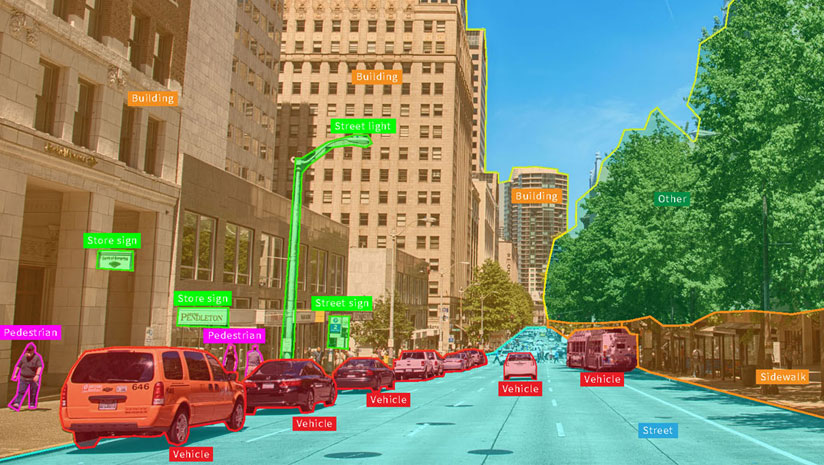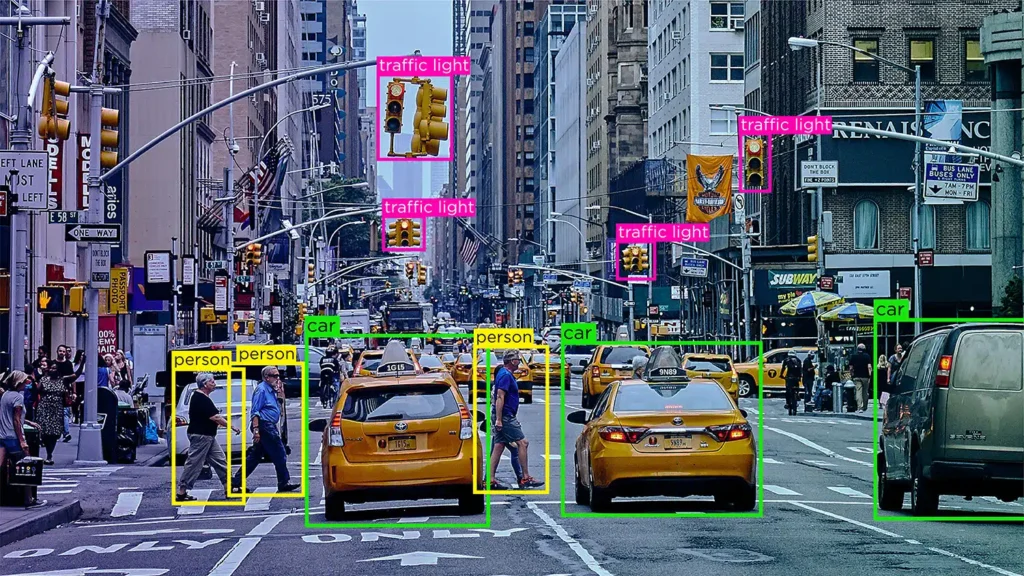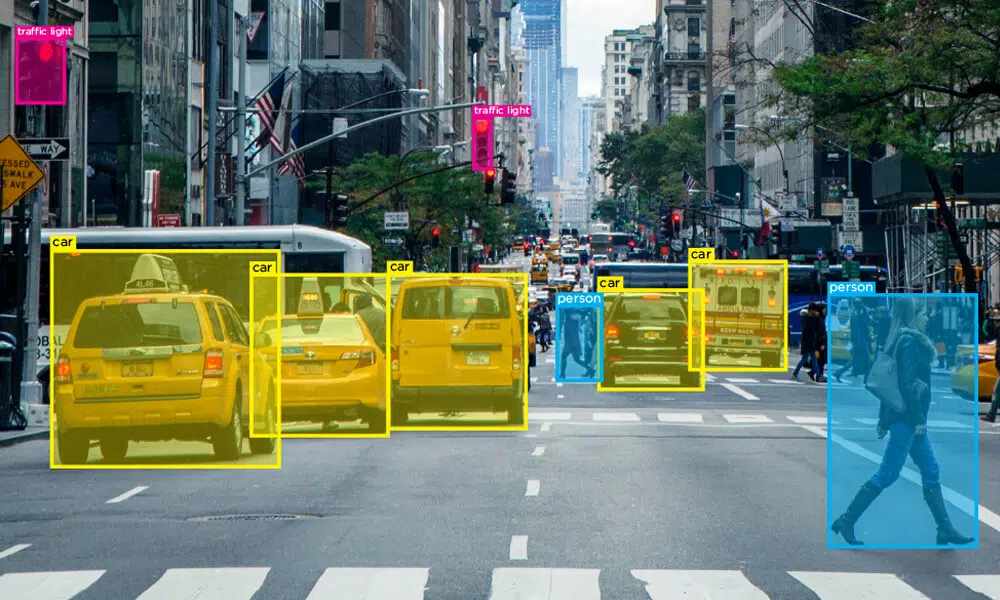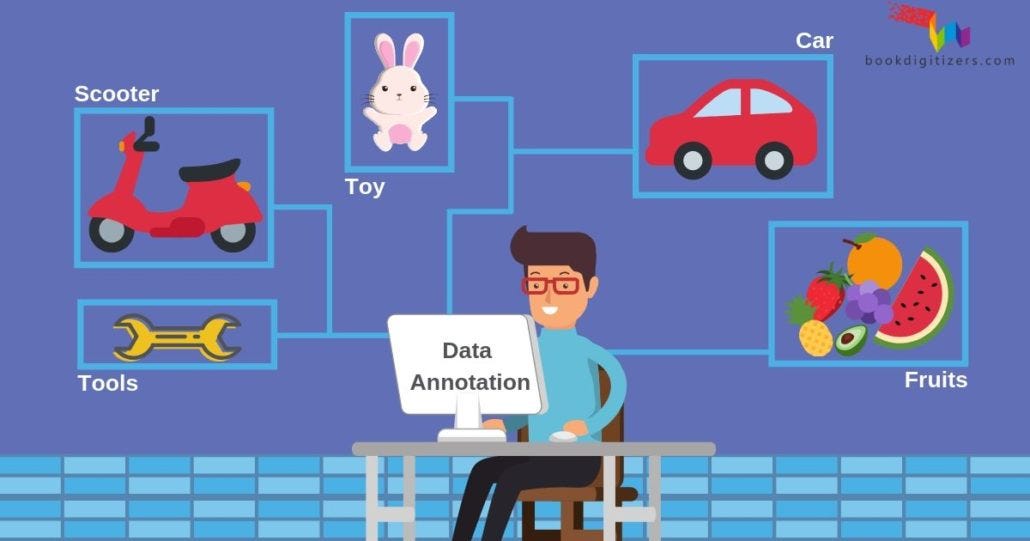Data annotation tech is a key player in today’s digital world. It helps businesses make sense of the huge amounts of data they collect every day. By using data annotation tech, companies can label and categorize their data, making it easier for computers to understand and analyze.
In this blog post, we will explore what data annotation is, why it is so important, and how it is used in various fields. From image labeling to text tagging, data annotation plays a big role in helping machines learn and make smarter decisions.
What is Data Annotation Tech?
Data annotation tech helps make sense of lots of data. Imagine you have a huge pile of pictures, and you need to tell the computer what’s in each one. Data annotation adds labels or tags to these pictures so that the computer can learn from them. This tech is like teaching a computer to recognize and understand what it sees.
When you use data annotation, you’re turning messy information into something useful. For example, if you label pictures of cats and dogs, the computer can learn to tell the difference between them. This process helps machines become smarter and make better decisions.
Understanding data annotation is important for businesses that want to use their data effectively. It helps in training computers to perform tasks like identifying objects in images or analyzing text. With the right annotations, computers can become very good at understanding and interpreting data.
Data annotation is crucial for many applications, from improving search engines to developing self-driving cars. By using this tech, we make sure that machines can learn from data in a way that is both accurate and efficient.
Why is Data Annotation Tech Important?
Data annotation is important because it helps machines understand data better. Without annotation, computers would struggle to make sense of raw data. By labeling and organizing this data, we give machines the tools they need to learn and perform tasks.
For example, in a photo of a street, data annotation might label different parts of the image like cars, pedestrians, and traffic lights. This helps self-driving cars understand their surroundings and make safe decisions. The better the annotations, the more accurate the machine’s actions will be.
Businesses also benefit from data annotation because it improves the quality of their data. Accurate data means better results in things like customer service, product recommendations, and marketing strategies. Annotated data helps businesses understand their customers and make better decisions.
In summary, data annotation is crucial for making data understandable for machines. It allows for smarter technology and more effective business solutions. Without it, the data we collect would be much less useful.
How Data Annotation Tech Helps Businesses
Data annotation tech helps businesses by making their data more useful. When companies collect data, it’s often unorganized and hard to analyze. Annotation tech turns this raw data into something structured and easy to work with.
For instance, in retail, data annotation can help by tagging images of products. This makes it easier to sort and search for items in online stores. Customers benefit from better search results and more accurate product recommendations.
Another way data annotation helps is by improving customer service. By analyzing annotated text from customer reviews or support tickets, businesses can quickly identify common issues and improve their services. This leads to happier customers and more successful businesses.
Overall, data annotation plays a big role in helping businesses use their data effectively. It makes data easier to understand, which leads to better decision-making and improved customer experiences.

Different Types of Data Annotation Tech
There are several types of data annotation tech, each with its own use. The main types include image annotation, text annotation, audio annotation, video annotation, and geospatial annotation. Each type helps in different ways, depending on what kind of data you’re working with.
Image annotation tech involves labeling objects in pictures. For example, it might highlight different animals in a wildlife photo. This is useful for training computers to recognize and classify objects in images.
Text annotation tech helps in understanding written information. By tagging parts of text, like names or emotions, it helps computers analyze and interpret text data more accurately. This is used in things like chatbots and sentiment analysis.
Audio and video annotation tech work similarly, but with sound and moving images. Audio annotation might involve labeling different speakers or sounds in a recording. Video annotation can track objects or events over time. These annotations help machines understand and process multimedia data.
Finally, geospatial annotation tech deals with maps and location data. It labels features on maps or satellite images, helping in applications like navigation systems and geographic analysis. Each type of data annotation makes it easier for machines to learn from different kinds of data.
Image Annotation Tech Explained
Image annotation tech is used to label parts of an image. This process involves drawing boxes or adding tags to different objects in a picture. For example, you might mark where a cat is in a photo or outline the shape of a building.
This tech is important for training computer vision models. These models learn to recognize and classify objects based on the annotations. The more detailed and accurate the annotations, the better the model will be at identifying objects in new images.
Image annotation tech is used in various fields, such as healthcare and automotive industries. In healthcare, it helps in diagnosing diseases from medical images. In self-driving cars, it aids in detecting pedestrians, traffic signs, and other vehicles.
By using image annotation tech, businesses and researchers can create smarter systems that can interpret visual information accurately. This tech is essential for making advancements in machine learning and artificial intelligence.
Text Annotation Tech: What You Need to Know
Text annotation tech involves adding labels to text data. This can include marking names, emotions, or other important information. By annotating text, computers can understand and process written content more effectively.
For example, in customer service, text annotation tech can identify key issues or sentiments in customer feedback. This helps businesses respond quickly and improve their services. Annotated text also helps in developing better search engines and chatbots.
Text annotation is crucial for natural language processing (NLP) tasks. It allows machines to perform tasks like translation, summarization, and question-answering by understanding the structure and meaning of text.
Overall, text annotation tech makes it possible for machines to read and understand text in a meaningful way. This enhances the ability of computers to interact with and analyze written information.
How Audio Annotation Tech Works
Audio annotation tech involves labeling different sounds or speakers in an audio recording. This can include marking where someone speaks, identifying background noises, or tagging specific audio events. By annotating audio data, computers can learn to recognize and process sound more accurately.
For instance, in speech recognition systems, audio annotation helps in training models to understand and transcribe spoken language. In customer service, it can be used to analyze phone calls and improve response strategies.
Audio annotation tech is also used in applications like voice assistants and audio classification. It helps machines distinguish between different sounds and improve their ability to understand spoken commands.
By using audio annotation tech, businesses can enhance their audio-related technologies and provide better user experiences. This tech plays a key role in making sound data more useful for machine learning applications.
The Role of Video Annotation Tech
Video annotation tech involves labeling objects and events in video footage. This can include tracking the movement of objects, identifying actions, or marking important moments in a video. Video annotation helps computers understand and analyze video content more effectively.
For example, in surveillance, video annotation tech can help in monitoring and identifying unusual activities. In sports, it can be used to analyze player movements and game strategies. The detailed annotations provide valuable insights and improve the accuracy of video analysis.
Video annotation is also crucial for training models in object detection and action recognition. By providing annotated video data, these models learn to recognize and interpret complex visual information over time.
Overall, video annotation tech enhances the ability of machines to process and understand video data. It plays a significant role in various industries, from security to entertainment.
Understanding Geospatial Annotation Tech
Geospatial annotation tech is used to label and categorize geographic data. This includes marking features on maps, identifying objects in satellite images, or tagging locations with GPS coordinates. Geospatial annotation helps in analyzing and interpreting spatial data.
For example, in urban planning, geospatial annotation tech can be used to label different land uses or infrastructure on maps. In agriculture, it helps in monitoring crop health and managing resources. The annotations provide context and improve the accuracy of spatial analysis.
Geospatial annotation tech is also used in navigation systems and location-based services. It helps in creating detailed maps and improving the accuracy of location-based data.
By using geospatial annotation tech, businesses and researchers can better understand and utilize geographic information. This tech is essential for making informed decisions based on spatial data.
How Data Annotation Tech Enhances AI Models
Data annotation tech plays a key role in enhancing AI models. By providing labeled data, it helps machines learn to recognize patterns and make predictions. The quality of the annotations directly impacts the performance of AI models.
For example, in image recognition, data annotation allows models to learn from labeled images of different objects. This improves their ability to identify and classify objects in new images. The same applies to text, audio, and video data.
Data annotation also helps in training models for specific tasks, such as sentiment analysis or speech recognition. By providing accurate and detailed annotations, businesses can develop more effective and reliable AI systems.
Overall, data annotation is crucial for building and improving AI models. It ensures that machines can learn from data in a way that leads to better performance and more accurate results.
Benefits of Using Data Annotation Tech
Using data annotation tech offers several benefits. It helps in organizing and labeling data, making it easier for machines to understand and analyze. This leads to better performance in machine learning and AI applications.
One major benefit is improved accuracy. By providing detailed and accurate annotations, data annotation helps machines make more precise predictions and decisions. This is important for applications like image recognition and text analysis.
Another benefit is efficiency. Data annotation streamlines the process of preparing data for machine learning. It reduces the time and effort needed to label and organize data, leading to faster development and deployment of AI systems.
Data annotation also enhances the usability of data. It provides structure and context, allowing businesses to extract valuable insights and make informed decisions. Overall, the use of data annotation improves the effectiveness and reliability of AI technologies.
Challenges in Data Annotation Tech
Data annotation tech faces several challenges. One challenge is the need for high-quality annotations. Inaccurate or inconsistent annotations can negatively impact the performance of machine learning models. Ensuring that annotations are correct and reliable is crucial for achieving good results.
Another challenge is the time and cost involved in data annotation. Annotating large amounts of data can be time-consuming and expensive. Businesses need to balance the need for detailed annotations with the resources available for the task.
Data annotation also requires skilled annotators who understand the nuances of the data. This can be a challenge in fields that require specialized knowledge, such as medical imaging or legal documents. Finding and training the right people for annotation tasks is important for maintaining quality.
Despite these challenges, data annotation is essential for building effective AI systems. Addressing these issues can lead to better data quality and more successful machine learning projects.

Outsourcing Data Annotation Tech: Pros and Cons
Outsourcing data annotation tech can be a good option for businesses. One advantage is cost savings. By outsourcing, companies can reduce the expenses associated with in-house data annotation, such as salaries and equipment costs.
Another benefit is access to expertise. Outsourcing providers often have experience and specialized knowledge in data annotation. This can lead to higher quality annotations and faster turnaround times.
However, there are also some drawbacks. One potential issue is the loss of control over the annotation process. Businesses may have less oversight and may need to invest time in managing and communicating with the outsourcing provider.
Another concern is data security. Sharing sensitive data with an external provider can pose risks. It’s important to choose a reputable provider and ensure that data privacy and security are maintained.
Overall, outsourcing data annotation tech has both pros and cons. Businesses need to weigh these factors and choose the option that best fits their needs and resources.
Choosing the Right Data Annotation Tech Partner
Choosing the right data annotation partner is important for successful projects. Start by evaluating the provider’s experience and expertise in your specific area. Look for a partner with a proven track record in delivering high-quality annotations.
It’s also important to consider the technology and tools used by the partner. Ensure that they have the right resources and capabilities to handle your data effectively. The quality of their annotation tools can impact the accuracy and efficiency of the process.
Another factor to consider is communication and support. A good partner should offer clear communication and be responsive to your needs. They should provide regular updates and be available to address any issues that arise.
Finally, review the provider’s approach to data security. Make sure they have strong measures in place to protect your data and comply with relevant regulations. Choosing the right data annotation partner can greatly enhance the success of your projects.
Future Trends in Data Annotation Tech
Future trends in data annotation tech are shaping the way we handle data. One trend is the use of automation and artificial intelligence to assist in the annotation process. Automated tools can speed up annotation and reduce human error.
Another trend is the integration of advanced technologies, such as augmented reality and virtual reality. These technologies are being used to create more detailed and interactive annotations, especially in fields like gaming and training simulations.
There is also a growing focus on improving the quality and accuracy of annotations. New methods and standards are being developed to ensure that annotations are consistent and reliable. This helps in building better machine learning models and AI systems.
Overall, the future of data annotation tech looks promising. Advances in technology will continue to enhance the capabilities of data annotation, making it more efficient and effective for a wide range of applications.
How Data Annotation Improves Customer Experience
Data annotation tech plays a key role in improving customer experience. By analyzing and labeling data, businesses can better understand customer needs and preferences. This leads to more personalized and relevant interactions.
For example, in e-commerce, data annotation tech helps in creating accurate product recommendations. By analyzing customer behavior and preferences, businesses can suggest items that are more likely to interest each customer.
Data annotation tech also improves customer support. By analyzing annotated customer feedback, businesses can identify common issues and address them more effectively. This leads to faster resolution of problems and better overall service.
In summary, data annotation tech enhances customer experience by providing valuable insights and improving interactions. It helps businesses meet customer needs more effectively and deliver a higher level of satisfaction.
Examples of Data Annotation Tech in Action
Data annotation tech is used in many real-world applications. One example is in autonomous vehicles. Here, annotation tech labels objects in video footage, such as pedestrians and traffic signs, helping self-driving cars navigate safely.
Another example is in healthcare. Data annotation tech helps in analyzing medical images by labeling areas of interest, such as tumors or abnormalities. This assists doctors in making accurate diagnoses and treatment decisions.
In the field of finance, data annotation tech is used to tag and analyze financial transactions. This helps in detecting fraudulent activities and improving security measures. The annotated data provides insights that are crucial for preventing fraud.
These examples show how data annotation tech is applied in various industries to improve processes and outcomes. It plays a vital role in making technology more effective and beneficial in different areas of life.
Tips for Effective Data Annotation Tech
Effective data annotation tech requires careful planning and execution. Start by defining clear guidelines for annotation tasks. This helps ensure consistency and accuracy in the labeled data.
It’s also important to use high-quality annotation tools. The right tools can make the annotation process more efficient and improve the quality of the results. Look for tools that are easy to use and suitable for your specific needs.
Training annotators is another key aspect. Make sure that those performing the annotations understand the guidelines and have the necessary skills. Providing thorough training helps maintain the quality of the annotations.
Finally, regularly review and validate the annotated data. This helps identify and correct any issues, ensuring that the data remains accurate and useful for machine learning applications.

The Impact of Data Annotation Tech on Innovation
Data annotation tech has a big impact on innovation. By providing high-quality labeled data, it enables advancements in machine learning and artificial intelligence. This leads to new and improved technologies that can transform various industries.
One area of impact is in developing new AI applications. With accurate annotations, AI models can learn and perform tasks more effectively. This drives innovation in fields like robotics, healthcare, and finance.
Data annotation tech also contributes to better research and development. By providing detailed data, it helps researchers explore new ideas and solutions. This fosters innovation and leads to the creation of cutting-edge technologies.
Overall, data annotation tech plays a crucial role in driving innovation. It provides the foundation for developing and advancing new technologies, leading to significant improvements and breakthroughs in various fields.
Conclusion
Data annotation tech is really important for making computers smarter. By labeling data, we help machines understand pictures, text, sounds, and videos better. This means they can do things like recognize objects in photos or understand what people are saying. Without data annotation, it would be much harder for computers to learn and make good decisions.
Overall, data annotation tech helps us in many ways. It makes businesses run smoother, improves customer experiences, and drives new inventions. As technology keeps advancing, data annotation will continue to play a big role in making sure our computers and machines can learn and work better.










